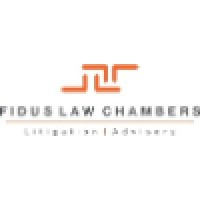
WHAT IS CONFIRMATION BIAS?
A confirmation bias is cognitive bias that favours information that confirms your previously existing beliefs or biases. For example, imagine that a person believes left-handed people are more creative than right-handed people. Whenever this person encounters a person that is both left-handed and creative, they place greater importance on this “evidence” that supports what they already believe. This individual might even seek proof that further backs up this belief while discounting examples that don’t support the idea.
Confirmation biases impact how we gather information but also influence how we interpret and recall information. For example, people who support or oppose a particular issue will not only seek information to support it, but they will also interpret news stories in a way that upholds their existing ideas. They will also remember details in a way that reinforces these attitudes.
In this article, Team YLCC explores the concept of confirmation bias and how it works in the legal setting. Read on!
UNDERSTANDING HOW CONFIRMATION BIAS WORKS
An example of confirmation bias in a famous criminal law case in South Africa was exhibited by the investigation team and the prosecutor in the murder trial of Fred van der Vyver, a young actuary who was accused of murdering his girlfriend Inge Lotz in June 2005. Inge was a beautiful and intelligent student at Stellenbosch University who was murdered in her flat by being bludgeoned over the head with a hammer. The police determined the hypothesis early on, in a classical error of inductive reasoning, that Fred was their man – apparently due to strange behaviour by Fred after the murder. The entire police investigation and the prosecution was based on this hypothesis and every piece of evidence that could possibly exonerate Fred was ignored and any evidence that supported the hypothesis or that was ambiguous was interpreted to mean that he was guilty. A crucial piece of exculpatory evidence that was ignored was that while Ilse was murdered in her flat in Stellenbosch, there was objective evidence including eyewitness testimony that Fred was working in his office at Old Mutual in Pinelands the whole day – in other words, that he had an alibi. Ultimately Fred was acquitted, but not before his parents spent millions of rands on defending him and his career at Old Mutual was ruined. Many followers of this story still believe Fred is guilty notwithstanding the objective exculpatory evidence – and the public perception of his guilt was so great that he has left the country.
There are many examples in history where confirmation bias has caused the public to adopt a hypothesis that simply does not bear objective scrutiny. One example is the assassination of President John F Kennedy in December 1963 and the longstanding controversy over whether Lee Harvey Oswald acted alone in shooting him. The famous film director Oliver Stone produced a masterly display of cinematic confirmation bias in his biopic JFK. Closer to home, this article does not admit of a detailed examination of the equally controversial Shrien Dewani case – but readers are encouraged to rethink their attitude to Shrien’s discharge, for example by reconsidering the weight of his admission that he frequented gay prostitutes. Is that piece of evidence supportive of the hypothesis that Shrien hired hitmen to murder his wife?
Although the phenomenon of confirmation bias would appear to be contrary to the notion that the legal profession requires the application of an objective mind, the manner in which litigation – civil and criminal – is both conducted and adjudicated is closely aligned to a remarkable degree with this phenomenon.
To illustrate the alignment, it is important to take into consideration the ethics of the legal profession. One of the basic ethical principles of legal practice is that a lawyer can never mislead the court by presenting false evidence. Put another way, a lawyer is obliged to tell the truth and nothing but the truth, but not to tell the whole truth. This principle finds particular application in the drafting of pleadings, especially when drafting affidavits in motion proceedings. In order to present the best possible version to the court (which is entirely true but not the entire truth) one must actively formulate a hypothesis and seek out and rely on factual evidence that supports the hypothesis. Those pieces of evidence that would falsify the hypothesis (that is, the client’s version) will not be included or otherwise minimised. An astute opponent will be adopting the same exercise. What one is doing here is not the subconscious application of confirmation bias (which is the most common manner in which this phenomenon manifests itself in human behaviour) but is, or rather should be, a conscious utilisation of this phenomenon to serve one’s client.
The other phenomenon that experienced lawyers will have observed with frustration is the tendency of many judges to display confirmation bias. Since the judge is under a duty, in an adversarial system, to allow both sides to be heard, the position of the objective adjudicator is that he or she must actively guard against any manifestation of confirmation bias. Indeed, it can be said that confirmation bias in the mind of the adjudicator is anathema to the principle of audi alteram partem.
While there are clear advantages for a lawyer to utilise confirmation bias to the advantage of his or her client, there are also pitfalls to doing so. Although an attorney should present the most favourable possible hypothesis that all the facts can muster for the benefit of the client in presenting a case to the other side and to the court, this is not so when dealing with the client. Lawyers are also under an ethical duty to advise their clients of all of the negatives and positives of their case. This requires attorneys to conduct an objective appraisal of all the evidence without exhibiting any confirmation bias. Thus, evidence relevant to any hypothesis, which the client might propose or the lawyer might develop, needs to be assessed both for the purposes of justifying and for the purposes of falsifying any of the hypotheses. What is required of the lawyer handling the matter, is the ability to develop multiple hypotheses and assess the probative value of every piece of evidence to all of these hypotheses simultaneously. This is not always an easy task.
CONFIRMATION BIAS IN JUDGES
At the highest level of the judiciary, even judges are not immune from bias. One study found that 97% of US judges believe they are above the average in their ability to ‘avoid racial prejudice in decision making’, a statistically unlikely state of affairs which probably reflects judges overestimating their abilities with respect to those of their peers. Another study of white American judges found that they displayed the same automatic, ‘implicit’, negative associations with race as found in the general population.
Confirmation bias can also affect judges when they hear and evaluate evidence brought before them in court. Specifically, judges might be biased in favour of evidence that confirms their prior hypotheses and might disregard evidence that does not correspond with their previous assumptions. Indeed, several studies have pointed to the occurrence of this bias among judges, lawyers, or police officers. For example, Rassin and his colleagues presented these groups of experts with a murder case in which the victim was a female psychiatrist and the prime suspect was the wife of one of her patients.8 The wife was accused of killing the psychiatrist, allegedly out of jealousy. Participants were asked to review 20 pieces of information and to rate the degree these incriminated or exonerated the prime suspect. However, half of the participants were also told about the possibility of another suspect: a former male patient of the psychiatrist who had been harassing her for a long time. Surprisingly, all participants rated the pieces of evidence similarly and all thought the prime suspect was guilty in the same degree. Thus, it seems that the judges, lawyers, and police officers failed to consider the alternative scenario. Evidence was considered only if it helped them confirm their prior belief of the prime suspect’s guilt and was disregarded if it pointed to a different suspect.
YLCC would like to thank Riya Singh for her valuable insights in this article.






